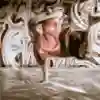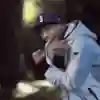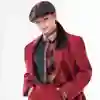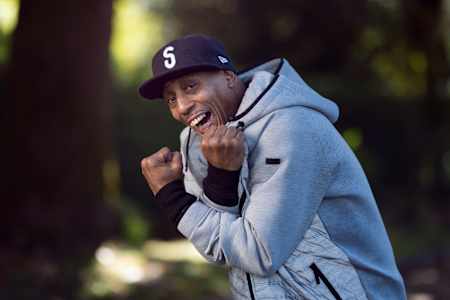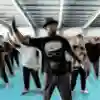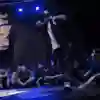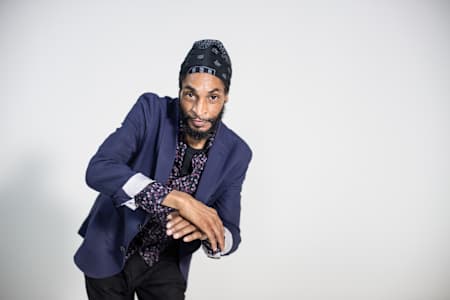
Dance
Unlock it: tracing the history and cultural significance of street dance
Street dance is an umbrella term used to describe multiple styles that were created in the streets. Find out about the origins of hip-hop dance, locking, popping and house dance.
Check out this deep dive into the history of hip-hop, popping, locking and house to find out how these seminal street dances elevated, empowered and united dancers across the globe.
01
Hip-hop: freestyle from the Bronx
Hip-hop broke out onto Bronx blocks in the 1970s. Breaking, DJing, MCing and graffiti made up the four elements of the culture and became a way of life for disenfranchised black and latino communities.
NYC emcees spat bars that thumped out of boomboxes, while the pioneers of turntablism like DJ Kool Herc looped rhythmic 'breaks' for the very first time and pumped out the soundtrack to the streets.
Lack of cash was no barrier to creativity and spirit. Dancers from rival crews or neighbourhoods settled their differences by throwing down moves in cyphers. Block parties, park jams and freestyle sessions in skating rinks and clubs were regularly happening, with dancers crowding the floor for the drum breaks of their favourite funk records. Most of which unknowingly laid the foundations of hip-hop, popping and locking while carving out a name for themselves.
Buddha Stretch is one of the influential figures of hip-hop dance
© Jason Halayko / Red Bull Content Pool
Freestyle hip-hop gave way to slews of party dances and became a globally recognised and performed style. By the time the golden era hit, MTV was flooded with music videos pumping out hip-hop choreography while dance studios were scrambling to diversify their roster of teachers and street genres.
Hip-hop, had crossed over from the east and west coast of America to major Hollywood films, theatres, television and all four corners of the globe.
Fast-forward to 2022, and street dancers are not only masters of their own genres, but they're battle-ready with dynamic skillsets and an arsenal of moves from other culturally impactful styles that they can swerve onto in a blink of an eye.
Dancehall and West African dances with afrobeats have undoubtedly influenced freestyle hip-hop. Contemporary dancers are krumping and bone-breaking. Latin social dances such as salsa, kizomba, samba, cumbia and bachata often feature in the footwork. Disco-based street styles like vogueing and waacking are sweeping nations. While old-school party dances like boogaloo, hustle and shuffle are making a comeback and propelling dancers into global sensations on IG. Capoeira and a broad range of martial arts have been fused into tricks. Dancers flex locking, popping and various other funk styles you've probably not even heard of.

11 min
Hip-Hop Final
This is a dance battle that’s all about personal expression and making conversation through movement – this is the Juste Debout 2017 Hip-Hop Final.
02
Locking: inner-city flavour to the screens of Soul Train
Like hip-hop, locking has carved out a legacy stretching from inner-city cyphers in LA to the glitter-covered dance floors of Soul Train over the past four-and-a-half decades. Much of that is owed to a dancer named Don Cambellock, who created the genre by accident. His son Dennis D Danehy Campbell recalls that his dad was trying to attempt another popular move in his school cafeteria called the 'Robot Shuffle'. Instead, Don Campbell wound up creating an entirely new dance that everyone in the room loved even more, to his surprise. Soon they were shouting, "Do that, Lock, Campbell, do that, Lock!" The rest is locking history.
Word got out about Don's emerging dance style, and soon he found himself and his crew of dancers called The Lockers on Soul Train performing the genre alongside the likes of James Brown on live television. When Don Campbell found out that he and none of the dancers who made the show famous would be paid for their appearances, he fought for change and equal pay for the whole cast of dancers.
Outside of Campbell, many lockers used the moves to symbolise unity during the civil rights movement, the locking handshake in particular. Many of the dancers were political activists off the floor and used dance as a platform to spark positive change.
Iconic choreographer Toni 'Mickey' Basil (who also sang Hey Mickey) founded The Lockers crew in 1973 and changed the face of dance forever. They performed on Saturday Night Live, Radio City Music Hall and Carnegie Hall, alongside numerous award shows, movies and their enormous solo careers.
Locking is hugely characterised by self-expression, self-love and hyping yourself up. There are popular locking moves like Giving Yourself Five, holding one hand behind your ear waiting for applause, pointing to the audience, etc... Outside the above, the most notable moves in locking are wrist rolls, jazz splits, high kicks, knee drops and other stylistic moves like grabbing and rotating your hat.

11 min
Locking Final
Vovan and Funky-J (Paris, France) go up against Black A and JP Black (Sorocaba, Brazil) in a funk-filled face-off for the Locking Championship.
03
Popping: from Fresno to the world
Popping hit Fresno and Oakland in the '60s. It was started by a dancer called Boogaloo Sam, who taught his brother, Popin' Pete and later his cousin, Skeeter Rabbit, how to be poppers. Together they formed the legendary dance group Electric Boogaloos and caught the attention of dancers Boogaloo Shrimp and Pop N Taco who joined them on stage. Each of them became icons in their own right and locked down spots in cult films Beat Street, Breakin' and Breakin’ 2: Electric Boogaloo. As well as jobs choreographing and giving private lessons to the likes of Janet Jackson, Chaka Khan and even Michael Jackson - with Boogaloo Shrimp personally being credited for showing him the ‘back slide’ more widely known as the Moonwalk.
While it’s greatly disputed whether popping was born in Fresno or Oakland, what is certain, is that the neighbourhoods in which popping was invented in both cities, were the ones with the least money and the least opportunities for something greater. Popping and the fame that these dancers found proved that anything was possible for youth at that time and that dance could be a career.
Rooted in '70s era, popping was initially danced to funk and disco, soundtracked by artists Zapp, Gap Band, Cameo, etc. By the '80s many poppers utilised electro music and began dancing to artists such as Kraftwerk and Egyptian Lover. Mainstream hip-hop was also used by poppers such as Run DMC, Whodini and Kurtis Blow. Today poppers blend a multitude of musical genres.
Popping is widely considered the most technically challenging of the street dances. It's characterised by isolating, tensing and releasing the muscles (hitting) to the rhythm of beats in the music.
In 2022, popping is one of the most hype genres. It is typically delivered by a dancer who possesses incalculable style, character and finesse.

12 min
Popping Final
Poppin C and Ness go up against Hoan and Jaygee in an all-Parisian Popping Final at Juste Debout 2017.
04
House: finding freedom on the dance floor
In the late 70s, the underground heads were starting to get tired of the cheesiness of disco music. Two DJs from New York City, Larry Levan and Frankie Knuckles, started to mix disco with other musical elements – like breaks, afro beats and electronic music. Shortly after, they started selling their music in record shops in New York, and house dance was born. The genre erupted out of the underground house music scene of Chicago and New York.
People quickly fell in love with this new music. Going dancing at the club went from activity to obsession; they based their whole lives around going to the clubs. It was a powerful experience for people. Frankie Knuckles once said that the club was like "church for people who have fallen from grace."
Early house lyrics contained positive, uplifting messages for all people from different walks of life but spoke mainly to those considered to be outsiders, especially African-Americans, Latinos, and LGBTQ+ subcultures. The house scene was one of the most integrated and progressive spaces in the 1980s.
House music DJs aimed to create a 'dream world of emotions' with 'stories, keywords and sounds', which helped to 'glue' communities together. Many house tracks encourage the audience to 'release yourself' or 'let yourself go'. Some house lyrics contained messages calling for equality, unity and freedom.
It's typically danced to loud and bass-heavy electronic dance music provided by DJs at clubs or raves. It's characterised by the torso's ecstatic, sex-driven rippling movement and even found its way onto numerous record titles. Lofting is another style, which is smooth, acrobatic and features a lot of floor work.

13 min
House Final
Toyin & Frankie J get into the groove against Kwame & Serge to win the street dance championship. Feel the vibe that’s expressed by the dancers as they improvise their moves based on the music.
05
The power of dance
Outside of the global visibility dance now holds and the gargantuan Tik Tok and Instagram fanbases vying to cop the next choreo, why is the history behind all of these street dances so powerful and vital to know?
It may help to understand that house, waacking, hip-hop, popping and locking (just like street dance styles such as vogueing, waacking, krumping, Memphis jookin, and footwork) weren't just born from a celebration of the music but as an escape from some sort of struggle.
People went to the club looking for more than a party. They wanted an emotional and physical release. The gospel-y vibes, strong bass beats, and hypnotising house lyrics set the perfect atmosphere for this. The underground clubs became a place of freedom and expression. Hip-hop, locking and popping were a vehicle to articulate deep and often unspeakable emotions.
All of which elevated, empowered and united a spectrum of characters on the dancefloor and beyond. More than that, dance has done so when the world needed it most and decades on still provides that same power.


